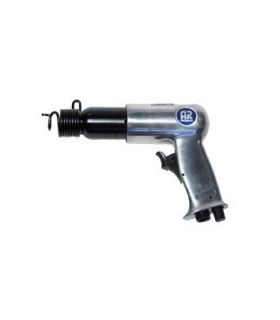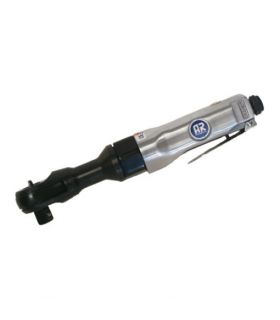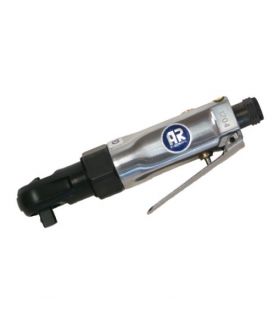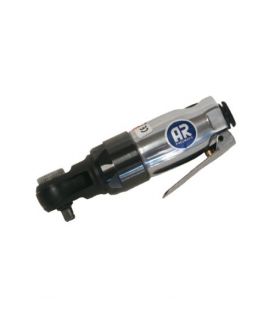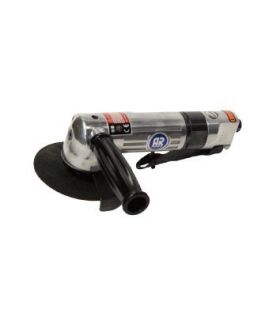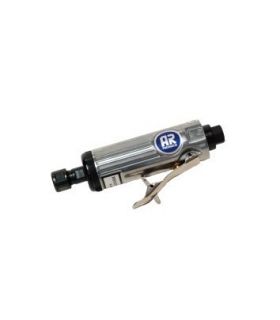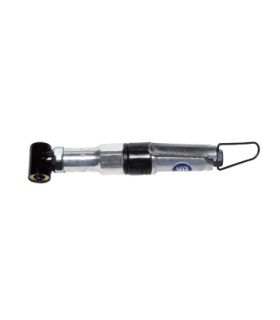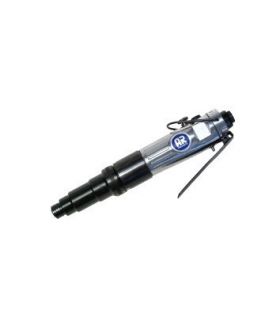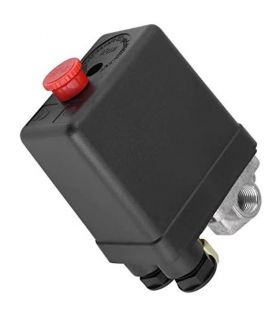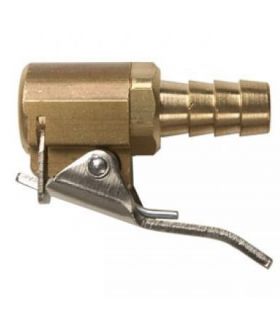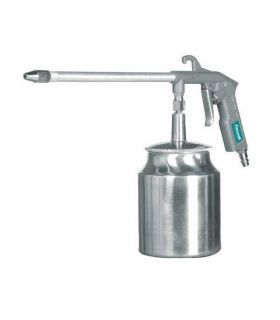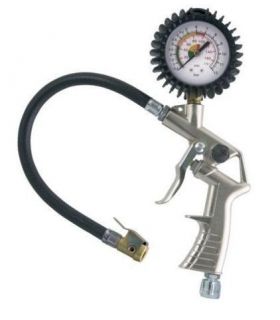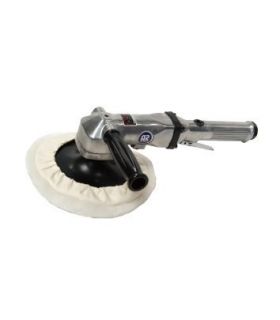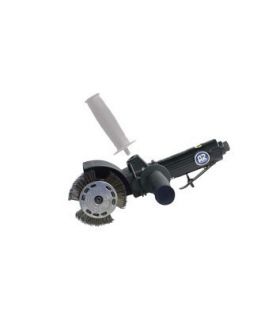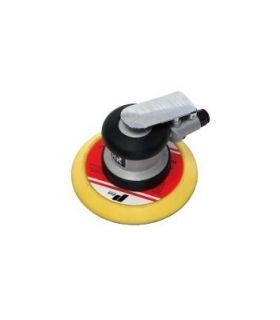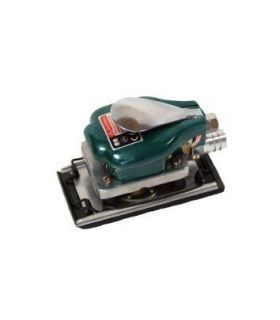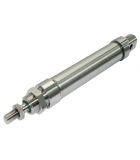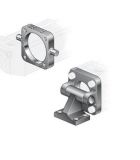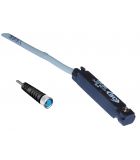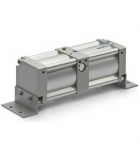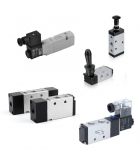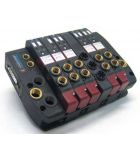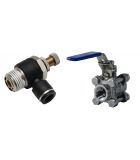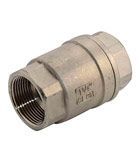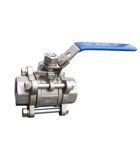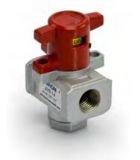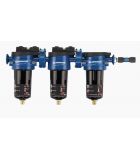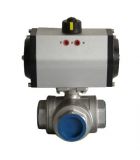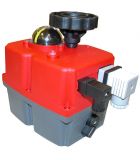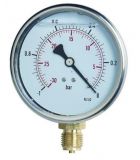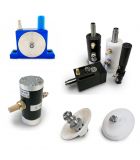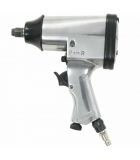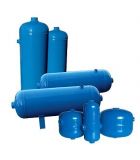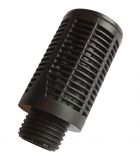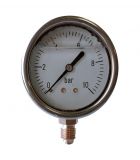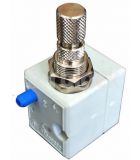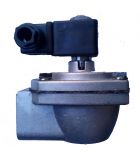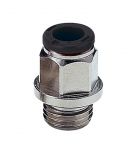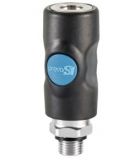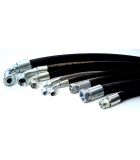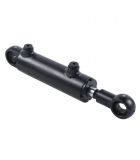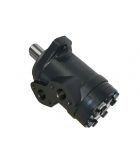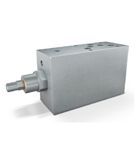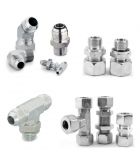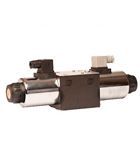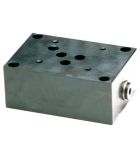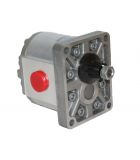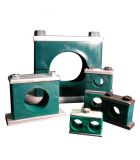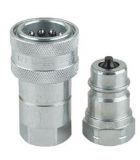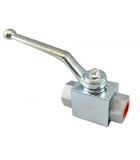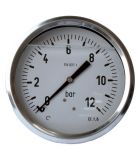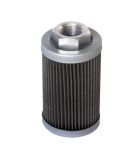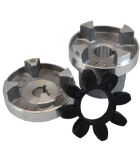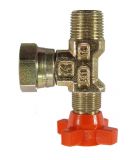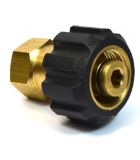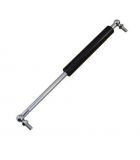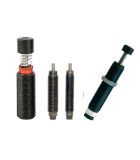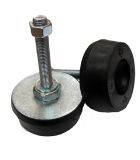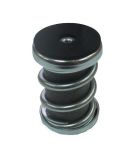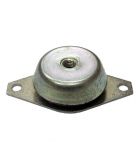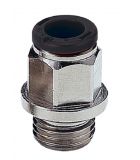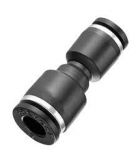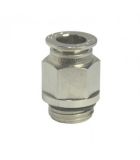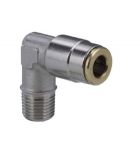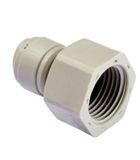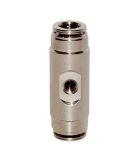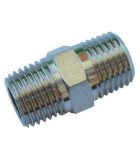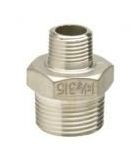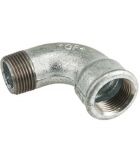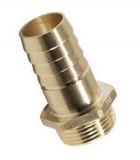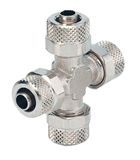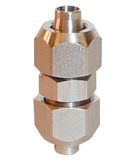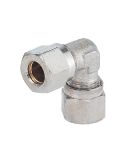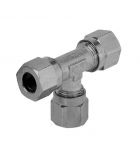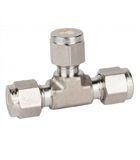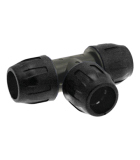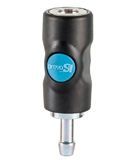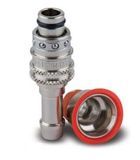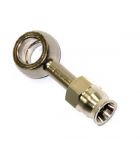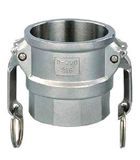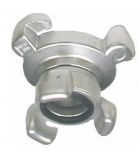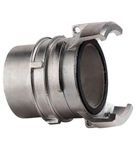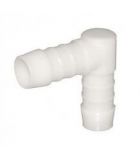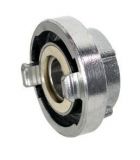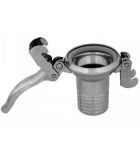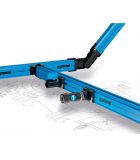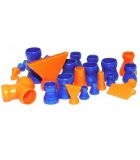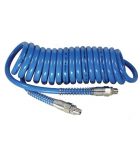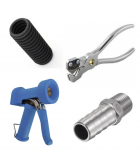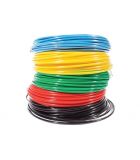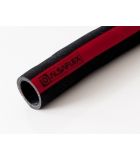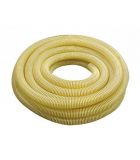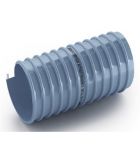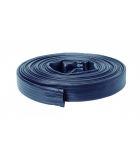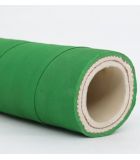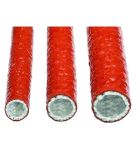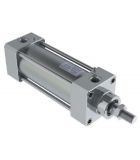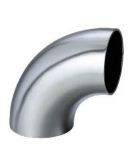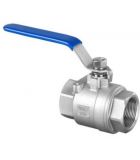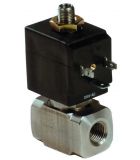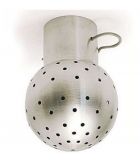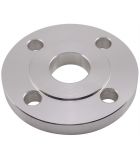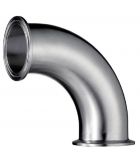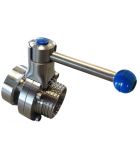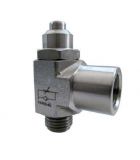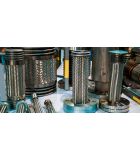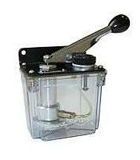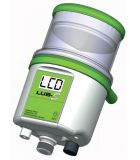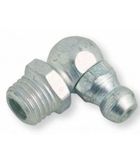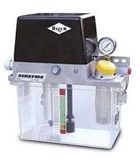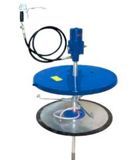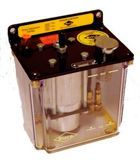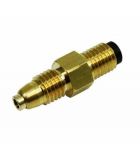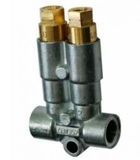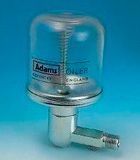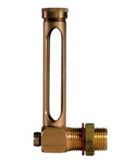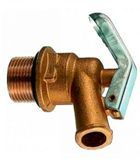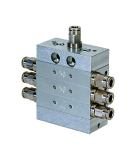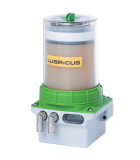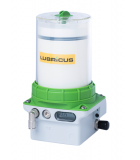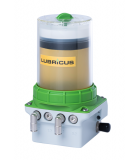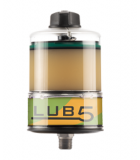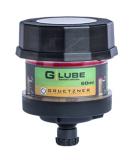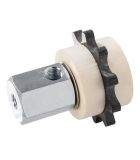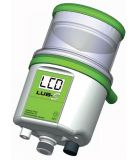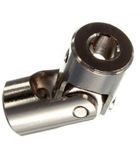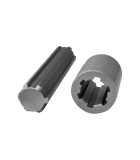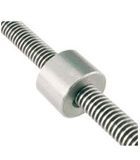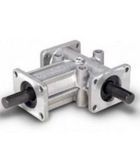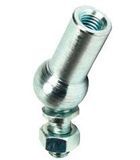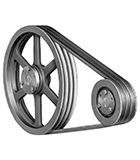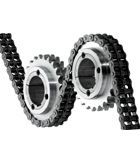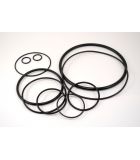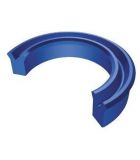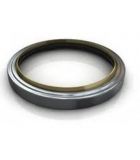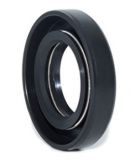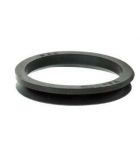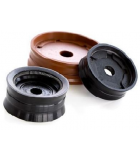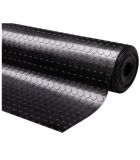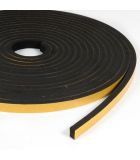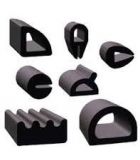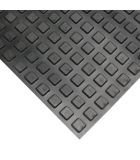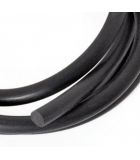PNEUMATIC TOOLS
Subcategories
-
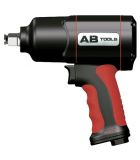
IMPACT WRENCH
<h2>Professional impact wrenches at the best price</h2><p> Impact wrenches are undoubtedly the most popular pneumatic tools. They are a high-powered, fast and very versatile professional tool that allows you to loosen and tighten nuts, screws and bolts that require very high tightening. They work by converting the compressed air energy stored in a compressor into high-torque rotational blows on the element to be tightened or loosened.</p><p> They are used daily in the automotive, construction and manufacturing sectors, as they have an impact mechanism that spreads a high-torque rotary force without requiring great effort from the operator. This is due to the great energy that can be stored inside and released suddenly on its output shaft.</p><p> <strong>Features of pneumatic impact wrenches:</strong></p><ul style="list-style-type:disc;"><li> They incorporate a compressor that stores air at high pressure and is responsible for constantly supplying the tool with energy to operate. Dependence on the air compressor can be seen as a drawback.</li><li> They are excellent for tightening or loosening screws that are quite hard thanks to their high torque force.</li><li> They stand out for their durability, power and speed to perform tightening and loosening jobs on nuts or screws.</li></ul><p> <strong>Applications of pneumatic impact wrenches:</strong></p><ul style="list-style-type:disc;"><li> Mechanical workshops. They are used in tasks such as the assembly and disassembly of tires, engines, bodies and other vehicle components.</li><li> Construction. They are used in the installation of pipes, metal structures, formwork and other elements.</li><li> Manufacturing, for the assembly of machinery, equipment and industrial products.</li><li> Agriculture. They are useful for the maintenance of agricultural machinery, tractors and harvesters.</li><li> Appliance repair. They are used to disassemble and assemble appliances such as washing machines, dryers and refrigerators.</li></ul><p></p> -
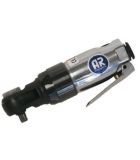
CARRACAS
<h2>Pneumatic Ratchets. Buy online at the best price</h2><p> Pneumatic ratchets are a tool used mainly in the mechanical, automotive and industrial sectors to tighten and loosen nuts and bolts quickly and efficiently.</p><p> They work by supplying compressed air through a hose connected to an air compressor. This compressed air acts as an actuator for the pneumatic motor inside the tool, which in turn drives the ratchet mechanism to perform the tightening or loosening action.</p><h3> The pneumatic ratchet is characterized by:</h3><ul style="list-style-type:disc;"><li> Power: The pneumatic ratchet offers significant power compared to the manual ratchet. This power allows you to loosen or tighten nuts and bolts with high torque thanks to the pneumatic motor that converts the energy of compressed air into mechanical movement.</li><li> Speed: The speed of pneumatic ratchets allows fastening and loosening tasks to be completed in significantly less time, thereby increasing productivity in industrial environments.</li><li> Ergonomics: By not requiring manual effort to generate torque, pneumatic ratchets reduce operator fatigue, especially during prolonged or repetitive work.</li><li> Direction Control: Pneumatic ratchets typically have a ratchet mechanism that can change the direction of motion and make it easier to tighten and loosen nuts and bolts.</li><li> Precision: The ratchet mechanism of pneumatic ratchets allows for precise control of the applied torque, which is crucial to prevent damage to parts or threads.</li><li> Versatility: These tools are versatile and can be used in a variety of activities, from machine shops to industrial assembly lines. Plus, they come in a variety of sizes to suit different jobs.</li><li> Durability: Thanks to the high-quality, durable materials used, pneumatic ratchets can withstand intensive use in industrial environments. This guarantees a long service life and unfailing performance even under demanding conditions.</li></ul><p> Some disadvantages of pneumatic ratchets are: considerable noise during operation, high weight of the tool, dependence on a source of compressed air to operate, regular maintenance of the tool (periodic lubrication or changing of air filters).</p><h3> Applications of pneumatic ratchets:</h3><ul style="list-style-type:disc;"><li> Mechanical workshops: For the assembly and disassembly of engines, gearboxes, suspensions and other automotive components.</li><li> Construction: For tightening and loosening nuts and bolts on metal structures, fixing beams, installing pipes and other construction work.</li><li> Manufacturing industry: For the assembly of machinery, production lines and other industrial equipment.</li><li> Industrial maintenance: For the maintenance and repair of machinery, vehicles and industrial equipment.</li><li> Agriculture: For the maintenance and repair of agricultural machinery, tractors and other agricultural equipment.</li></ul><p></p> -
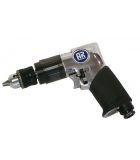
DRILLS
<h2>Online pneumatic drills at the best price</h2><p> Pneumatic drills are designed for drilling jobs, usually in the industrial sector where working conditions are more demanding. The pneumatic drill generates the impact directly, using a gear system that transmits the force through compressed air.</p><p> Depending on the drill bit used, pneumatic drills can be used on various types of materials. Furthermore, thanks to the variety of sizes, models and types, this product can be used in both professional workshops and in the home.</p><p> The <strong>advantages of pneumatic drills</strong> include:</p><ul style="list-style-type:disc;"><li> Power: They offer high torque power, making them ideal for demanding jobs in hard materials such as concrete, metal and wood.</li><li> Lightness: They are lighter than electric drills, which reduces operator fatigue, especially during prolonged work.</li><li> Safety: They are less likely to generate sparks or electrical shocks, making them safer to work in environments with flammable or wet materials.</li><li> Low maintenance: They require little maintenance except occasional lubrication.</li><li> Versatility: They support a wide range of drill bits for different tasks, such as drilling, countersinking and screwing.</li><li> On the other hand, the disadvantages include:</li><li> Noise: They tend to be louder than electric drills and may require the operator to protect their hearing.</li><li> Reliance on a compressor: They require an external air compressor to operate, which increases the cost and complexity of the system.</li><li> Air consumption: They consume a considerable amount of compressed air and can be a problem if the compressor does not have sufficient capacity.</li><li> Slower speed: They tend to be slower than power drills when it comes to completing some jobs.</li></ul><p> <strong>Applications of pneumatic drills:</strong></p><ul style="list-style-type:disc;"><li> Construction, such as drilling into concrete, brick and masonry, setting anchors and plugs or screwing into beams and structures.</li><li> Metalworking, such as drilling sheet metal, countersinking holes, or threading parts.</li><li> Woodworking, such as wood drilling, countersinking screw holes, and furniture assembly.</li><li> Mechanical workshops, from drilling metal parts to threading holes and removing rusty screws.</li><li> Automotive repair, including bodywork drilling, disassembly of parts or screwing of components.</li></ul><p></p> -
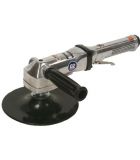
SANDERS
<h2>Professional pneumatic sanders at the best price</h2><p> Pneumatic sanders are a portable, pneumatically powered tool used for roughing, sanding and polishing tasks to achieve uniformity of surfaces such as wood, metal, composites, plastic, etc.</p><p> The air inlet regulator allows the rotation speed to be adapted to different jobs. There are also two types of movements:</p><ul><li> Rotary: occurs when the base plate rotates on its own axis, providing uniform and fast sanding.</li><li> Orbital: where the base plate performs an orbital movement in addition to the rotary movement, which generates a finer and smoother finish.</li></ul><p> <strong>Advantages of pneumatic sanders:</strong></p><ul style="list-style-type:disc;"><li> Pneumatic solutions are easier to handle than a power sander, allowing you to reach inaccessible areas such as corners, skirting boards or tight nooks without losing power.</li><li> They are not exposed to overheating when working continuously, since they do not use electricity.</li><li> Pneumatic tools are perfect for use in extreme weather conditions, as power tools can only be operated in specific temperatures so as not to expose their components.</li><li> Pneumatic tools are best for tasks where speed is key. However, prior experience in handling them is necessary so that efficiency does not decrease.</li><li> Pneumatic tools require virtually no maintenance and, thanks to their reduced weight and smaller size, are easier to handle.</li><li> Pneumatic tools are not expensive because they use the energy generated by the compressor to operate, unlike electric tools, which are completely dependent on electricity.</li></ul><p> Pneumatic sanders are used in a <strong>wide variety of applications</strong> , including:</p><ul style="list-style-type:disc;"><li> Carpentry: For roughing, sanding and polishing wood in furniture, doors, frames and other items.</li><li> Metalworking: For the preparation of metal surfaces prior to painting, welding or coating.</li><li> Construction: For sanding walls, ceilings, plaster and other building materials.</li><li> Automotive: For the preparation of vehicle bodies before painting or polishing.</li><li> Manufacturing industry: For surface finishing on products such as furniture, appliances and toys.</li></ul><p></p> -
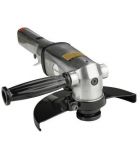
GRINDERS
<h2>PNEUMATIC GRINDERS. Buy online at the best price</h2> <p>Also known as radial grinders, angle grinders are a widely used tool in domestic or professional jobs.</p> <p>The grinder is used to sand, cut and polish different materials, especially metals and wood, thanks to an abrasive disc placed at its end that rotates at high speeds.</p> <h3>Uses of pneumatic grinders:</h3> <ul style="list-style-type:disc;"><li><strong>Sanding:</strong> is the surface process to obtain a smooth and uniform finish on a surface. To achieve good sanding, abrasive sanding discs with different grain sizes are used, from the coarsest to the finest, depending on the material and the desired level of polishing.</li> <li><strong>Cutting:</strong> To section a piece, diamond or carbide cutting discs are used, characterised by their thinness and high hardness, ideal for making straight and curved cuts on different materials such as plastics, wood, metals, tiles, etc. Angle grinders are especially suitable for cutting tasks.</li> <li><strong>Polishing:</strong> To smooth, soften and give shine to the surface, felt or cloth discs and very fine abrasive pastes are used.</li> </ul><h3>How Grinders Work:</h3> <p>Pneumatic models are connected to an air compressor that supplies the power needed to operate. Compressed air enters the grinder and activates an internal mechanism that rotates an abrasive wheel at high speeds. This wheel, when it comes into contact with the material to be worked, cuts, roughens or polishes it.</p> <h3>Types of pneumatic grinders:</h3> <p>There are two types of grinders depending on their shape. The angle grinder has the abrasive disc at a 90º angle to the tool axis and is suitable for cutting and grinding work. Meanwhile, the straight grinder places the abrasive disc in line with the tool axis, allowing greater control and precision for polishing and sanding work in hard-to-reach places.</p> <p>Depending on their size, you can distinguish between a mini grinder and a large radial grinder. Mini grinders can reach up to 1500 W of power with discs between 115 and 125 mm in diameter. They are very light, which is why they are the most commonly used for DIY or small-scale jobs. On the other hand, large radial grinders reach 2600 W and the discs have diameters between 180 and 230 mm. The difference is the power they have, which is why they are ideal for working with very hard surfaces and materials in areas such as construction, machining parts and all kinds of professional work.</p> -
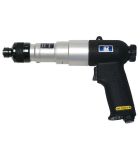
SCREWDRIVERS
<h2>Pneumatic Screwdrivers. Buy online at the best price</h2><p> Manual screwdrivers are one of the most commonly used tools for assembly tasks and the development of assembly processes. However, pneumatic screwdrivers are chosen by production and maintenance managers in companies. This is because it is a device powered by compressed air to loosen or tighten screws of all kinds, applying the least possible pressure and force.</p><h3> Advantages of pneumatic screwdrivers:</h3><ul style="list-style-type:disc;"><li> Power: Capable of tightening and loosening screws with great force, even in hard materials.</li><li> Speed: They perform screwing tasks quickly and efficiently.</li><li> Durability: Designed to withstand intensive use in industrial environments.</li><li> Versatility: Available in different models and sizes to adapt to various applications.</li><li> Safety: By not depending on an electrical power source, they reduce the risk of electricity-related accidents.</li></ul><p> Pneumatic screwdrivers are used for a <strong>variety of tasks</strong> :</p><ul style="list-style-type:disc;"><li> Automotive, for component assembly and vehicle repair.</li><li> Construction, for fixing panels or installing metal structures.</li><li> Manufacturing, for the assembly of products and production lines.</li><li> Furniture store, for assembling furniture.</li><li> Industrial maintenance, in the repair of machinery.</li></ul><p> In short, pneumatic screwdrivers are an excellent solution for the industrial sector thanks to their power, speed and precision.</p> -
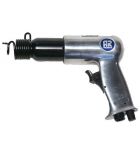
CHISELERS
<h2>Pneumatic Chisels. Buy at the best price</h2><p> Pneumatic chisels are indispensable tools in construction, industry and DIY. Their ability to cut, break and scale a wide variety of materials, from concrete and metal to stone, makes them an essential solution.</p><p> This tool uses compressed air to generate an impact motion on a chisel. This impact, combined with the force of the chisel, allows hard materials to be broken, carved or sculpted efficiently and accurately.</p><h3> Advantages of pneumatic chisels:</h3><ul style="list-style-type:disc;"><li> Power: Thanks to compressed air, they offer great impact force, ideal for heavy work.</li><li> Versatility: Available in different sizes and powers, they adapt to a wide range of applications.</li><li> Precision: They allow cutting and carving with great precision.</li><li> Durability: Constructed from heavy duty materials, they offer a long lifespan.</li><li> Safety: As they do not generate sparks, they are safe to work in environments with risk of explosion.</li></ul><p> Pneumatic chisels are used in a wide variety of <strong>applications</strong> :</p><ul style="list-style-type:disc;"><li> In construction for demolition, cutting concrete or preparing surfaces.</li><li> In the industry for removing burrs, cleaning parts or metal sculpture.</li><li> In maintenance tasks for machinery repair and rust removal.</li><li> For DIY tasks such as small demolitions or stone and metal work.</li></ul> -
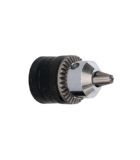
ACCESSORIES FOR PNEUMATIC TOOLS
-

PNEUMATIC NAILERS
<h2 style="margin-top:0px;margin-bottom:.5rem;font-family:sans-serif, Tahoma, sans-serif, Arial;line-height:1.1;color:#333333;font-size:1.45em;padding:15px 0px;background-color:#ffffff;"> Pneumatic Nailers. Buy at the best price</h2><p> Pneumatic nailers are tools that propel nails at high speed using compressed air to be able to insert them into any material. They are practically essential in carpentry, construction or upholstery work.</p><p> Each pneumatic nailer has high impact force and speed to properly hold heavy gauge metal nails into the wood or metal surface of doors, frames, panels and trusses.</p><p> The operation is really simple: the nails are placed in the tool's magazine. Next, the power of the nailer is adjusted according to the surface to be drilled and, finally, the gun is placed on the surface to be worked and the trigger is pulled.</p><h3> Advantages of pneumatic nailers:</h3><ul><li> It is compatible with the hardest materials.</li><li> They are highly durable tools.</li><li> Their handling does not require much effort, thus reducing operator fatigue.</li><li> Its use is suitable both in the workshop and on the construction site.</li><li> They are highly precise. The nails are placed in the exact spot, avoiding damage to the material.</li></ul><p> The <strong>applications</strong> of pneumatic nailers are virtually unlimited, but can be summarized as carpentry, construction, coatings and finishes, upholstery, etc.</p><p> A similar tool is the stapler, which instead of inserting nails, inserts staples.</p>
Pneumatic Tools. Buy them online at the best price
Pneumatic tools operate by the controlled expansion of compressed air stored in a compressor. This air is channeled through a hose to the tool to generate movement, rotation or impact, depending on the type of tool.
Advantages of pneumatic tools:
Pneumatic tools are primarily known for reducing vibration and operator fatigue, but they also offer other benefits such as:
- Power: Air tools can generate a lot of power compared to similarly sized power tools, making them ideal for tough jobs.
- Portability: Pneumatic tools are usually lighter and more compact than electric tools, which makes them easier to handle.
- Versatility: There is a wide range of pneumatic tools available for a multitude of tasks, ranging from tightening nuts to demolishing structures.
- Low maintenance: Pneumatic tools typically require little maintenance due to fewer moving components compared to power tools.
- Safety: Pneumatic tools are generally safer than electric tools, as there is no risk of electric shock due to their independence from electricity for operation.
Main functions of pneumatic tools:
Due to their versatility, pneumatic tools are used to perform a variety of tasks, including: tightening and loosening screws and nuts, drilling and punching, hammering, sanding, painting, cutting, stapling, riveting.
Application areas for pneumatic tools
Pneumatic tools are very versatile and find applications in a variety of industries. Below we explain their use in each activity:
- Woodworking: used here for nailing, stapling and sanding. Examples include attaching mouldings, creating wood joints and sanding surfaces.
- Metalworking: Cutting, polishing, drilling and riveting metales.Algunos are appropriate in this sector. Some examples include drilling holes in sheet metal, polishing metal surfaces and riveting parts.
- Automotive: These tools are used for tire removal, body repair, painting, and part installation. Examples include impact wrenches for tire changes or paint spray guns for coating.
- Construction: These include tasks such as framing nailer, concrete nail gun, and concrete drilling.



